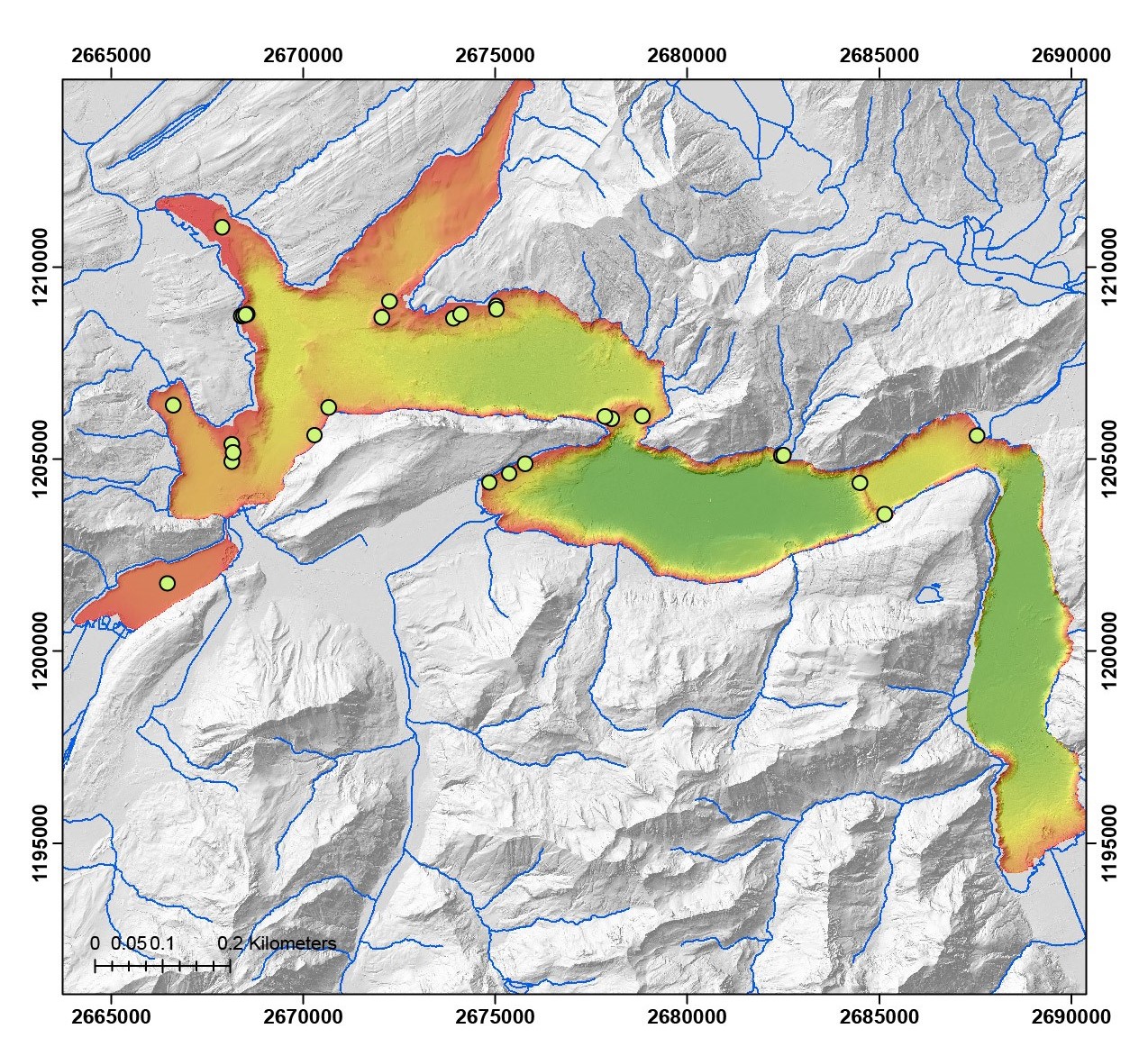Work package response
|
Summary |
On the one hand, the aim of this work package is to characterize the sediment-mechanical characteristics and to estimate the volumes of the sediments in Lake Lucerne. On the other hand, the stability of the sediments under seismic shaking will be studied. For this purpose, ocean bottom seismometers (OBS) will be placed in Lake Lucerne at selected locations (see map). These OBS are recording the seismic signal on short (days) and long (months) intervals. Cone Penetration Test (CPT) measurements are used to define the geotechnical characteristics of the sediment. To measure the pore pressure at different depths in the sediment, a new instrument was designed, combining standard OBS and piezometer probes. The mechanical characteristics and the thickness of the sediments will be used as input parameters for modelling tsunami waves (WPwave). |
|---|---|
|
Involved institutions |
SED, ETHZ and marum Bremen |
|
Collaborators |
Tsunami waves do not resemble normal undersea currents or sea waves because their wavelength is far longer.[5] Rather than appearing as a breaking wave, a tsunami may instead initially resemble a rapidly rising tide. For this reason, it is often referred to as a "tidal wave", although this usage is not favoured by the scientific community as tsunamis are not tidal. Tsunamis generally consist of a series of waves, with periods ranging from minutes to hours, arriving in a so-called "internal wave train".[6
